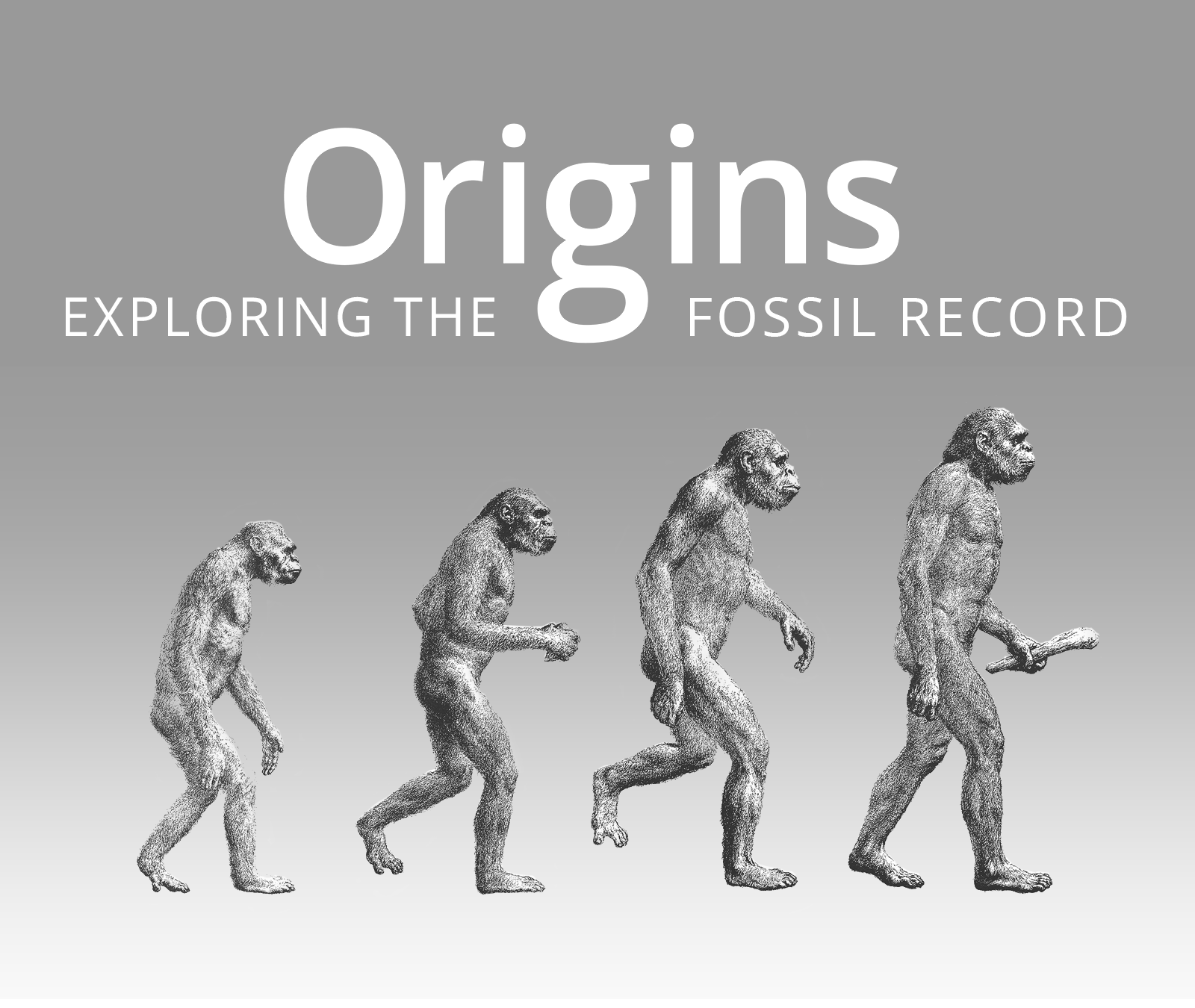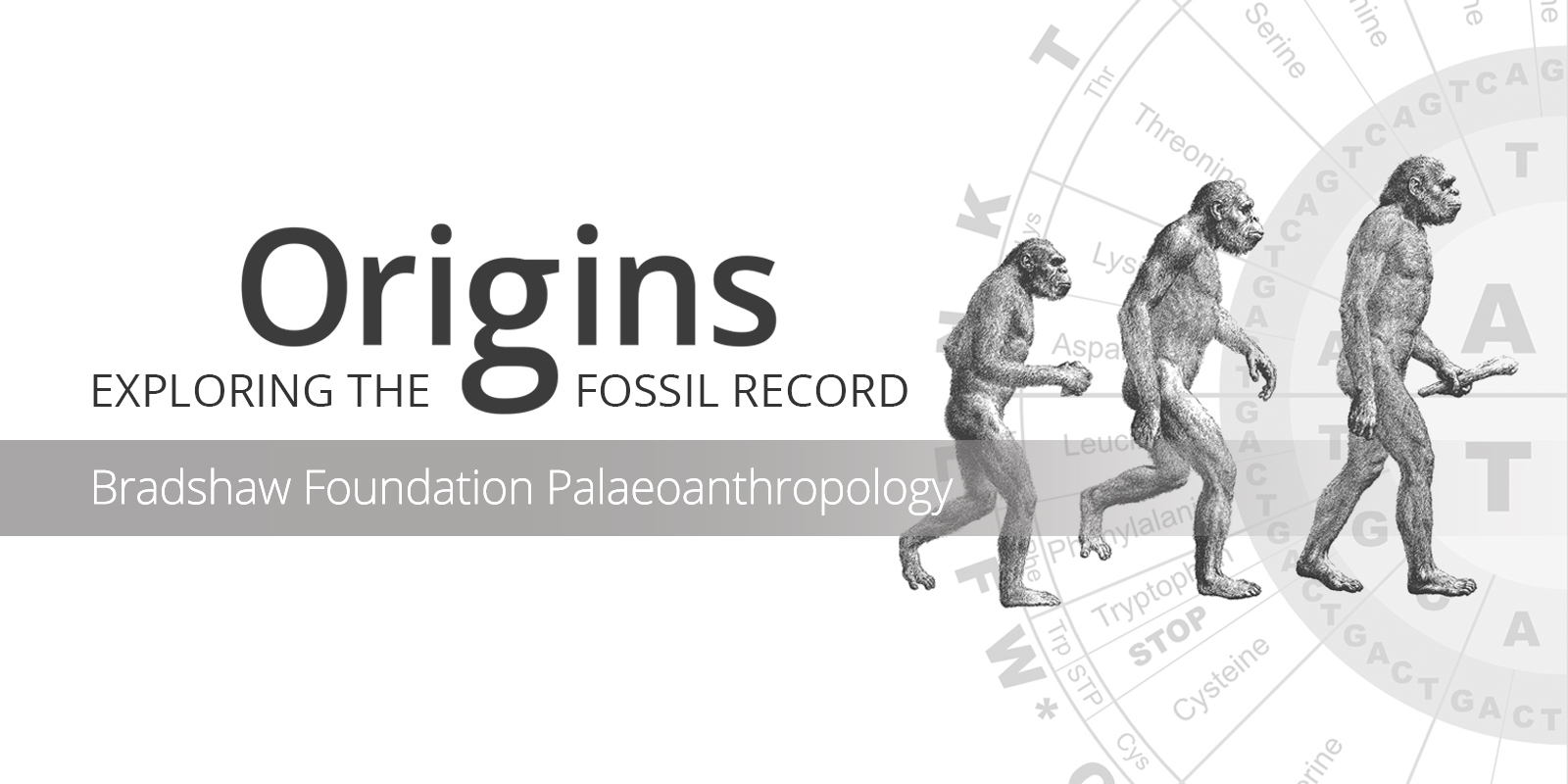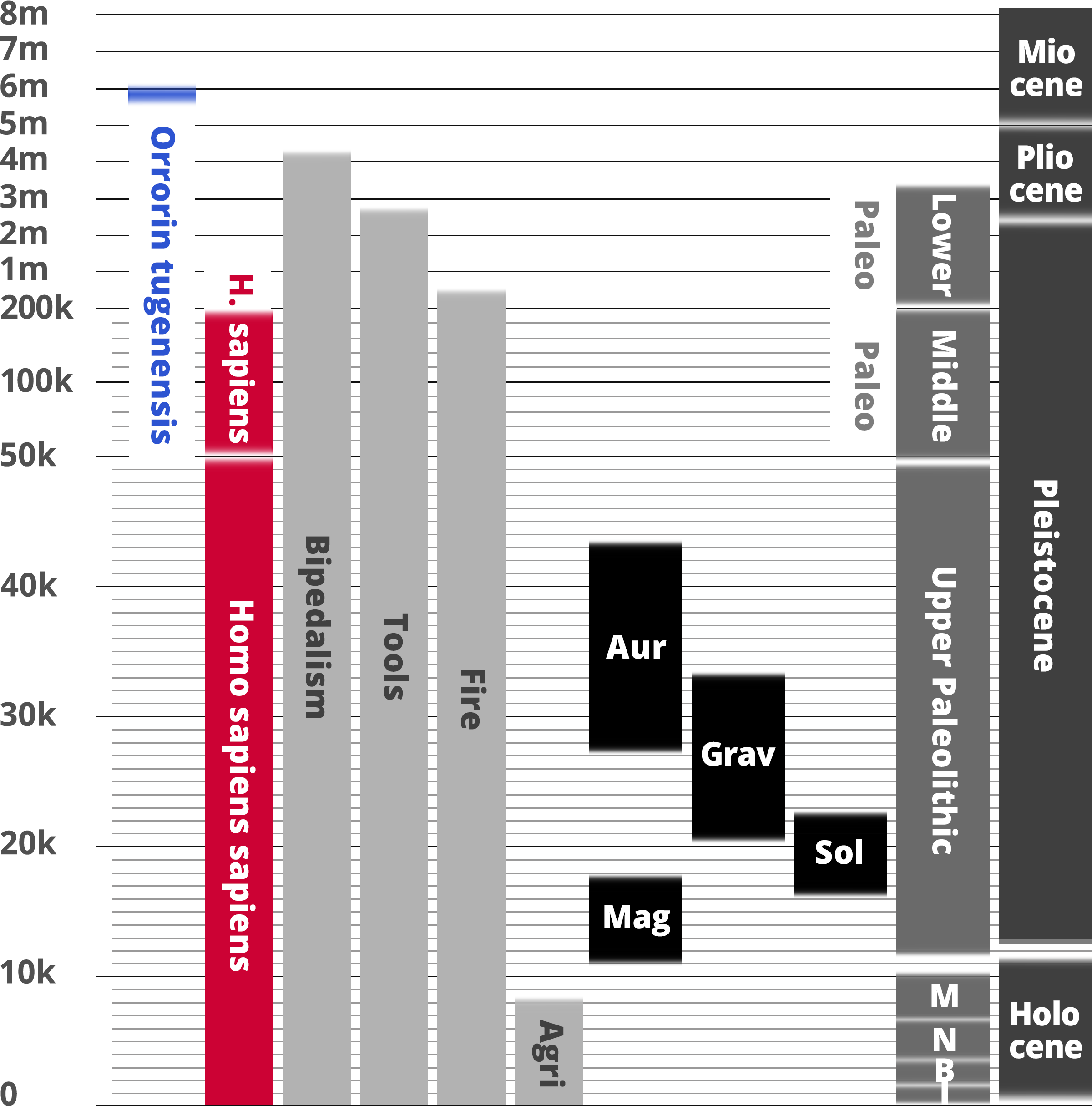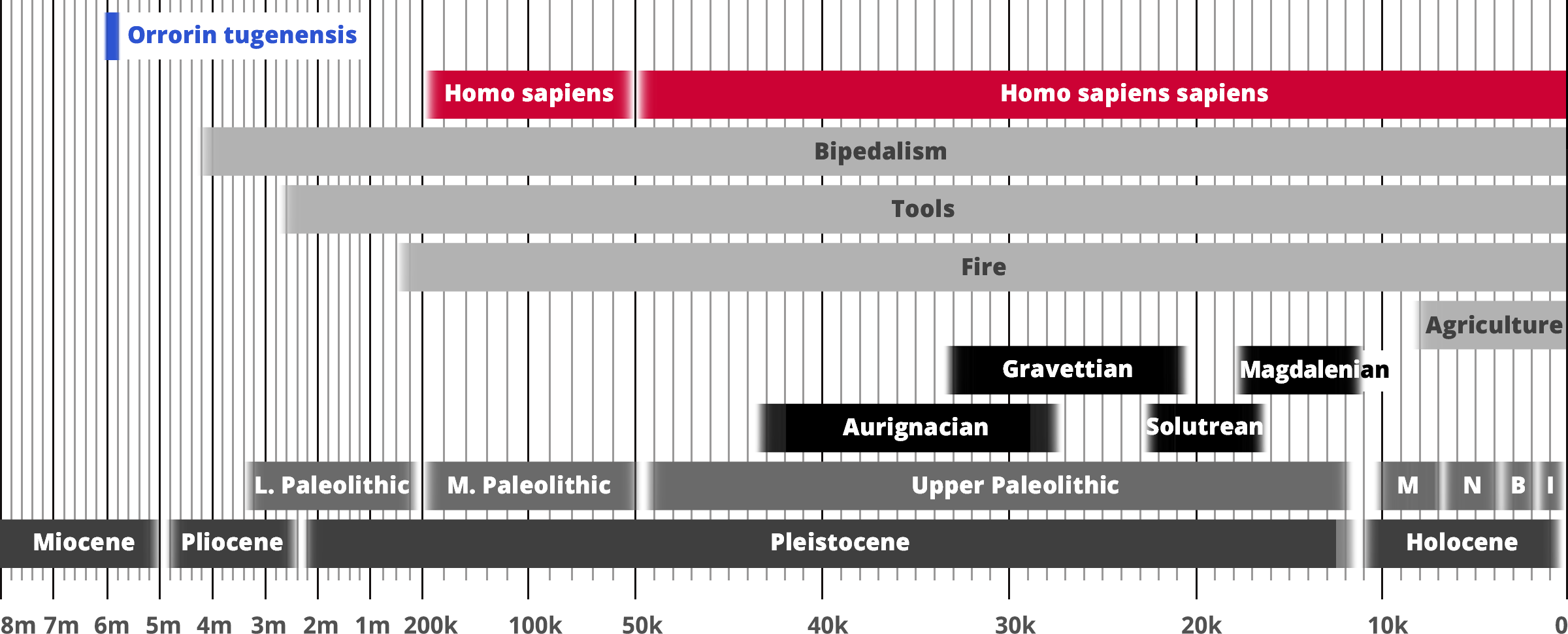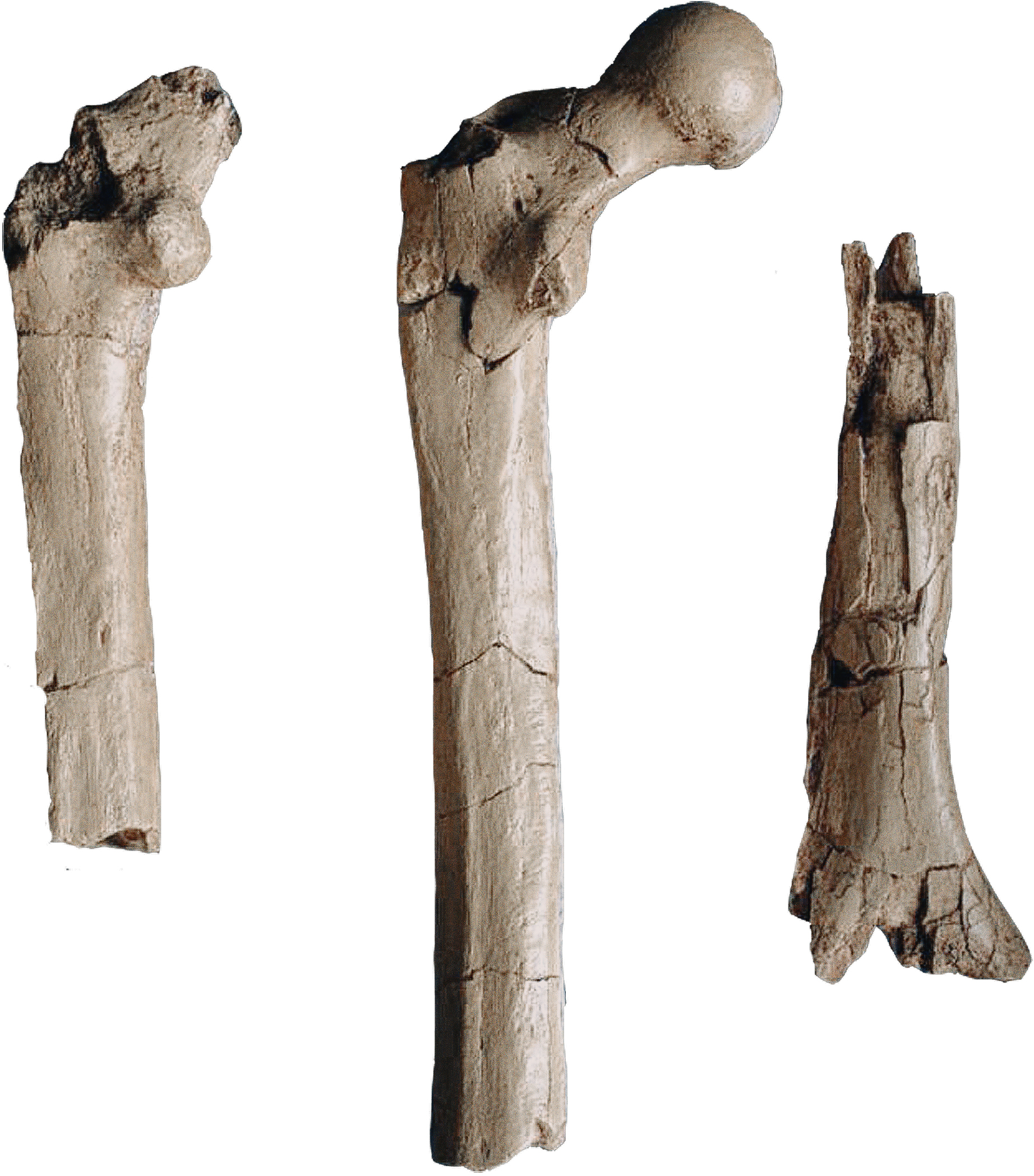Orrorin tugenensis
Homo sapiens
Hominin traits
Archaeological industry/Technocomplex including art
Period in human prehistory: M = Mesolithic; N = Neolithic; B = Bronze Age; I = Iron Age;
Geological epoch
* Note: Table based past and current research and scientific consensus
Orrorin tugenensis
Homo sapiens
Hominin traits
Archaeological industry/Technocomplex including art
Aur = Aurignacian; Mag = Magdalenian;
Grav = Gravettian; Sol = Solutrean
Period in human prehistory:
M = Mesolithic; N = Neolithic;
B = Bronze Age; I = Iron Age;
Geological epoch
* Note: Table based past and current research
and scientific consensus
| ORRORIN TUGENENSIS |
 |
| Genus: |
Orrorin |
| Species: |
Orrorin tugenensis |
| Other Names: |
Original Man, Millenium Man |
| Time Period: |
6 to 5.8 million years ago |
| Characteristics: |
Early Bipedal Hominin |
| Fossil Evidence: |
Fossils, Tugen Hills, Kenya, Africa |
Orrorin tugenensis is considered to be the second oldest - after
Sahelanthropus tchadensis - known hominin ancestor that is possibly related to modern humans, and it is the only species classified in genus Orrorin. Orrorin tugenensis is significant in the origins of human evolution because it can be classified as an early bipedal hominin. [Haviland et al. 2007]. The name was given by Brigitte Senut and Martin Pickford, who found the Orrorin tugenensis fossils in the Tugen Hills of Kenya in 2000.
The age of the specimen has been estimated to 6 to 5.8 million years, based on radiometric decay [K-Ar dating], paleomagnetism and biochronology. Presently, 20 fossils have been found at 4 sites: these include the posterior part of the mandible in two pieces; a symphys and several isolated teeth; three fragments of femurs; a partial humerus; a proximal phalanx; and a distal thumb phalanx.
Orrorin tugenensis had small teeth relative to its body size. The canines are ape-like but reduced, like those found in Miocene apes and female chimpanzees, and the smalll post-canines are microdont like modern humans. In the femur, the head is spherical and rotated anteriorly; the neck is elongated and oval in section; and the lesser trochanter protrudes medially. This suggests that Orrorin tugenensis was bipedal, however, the rest of the postcranium indicates it climbed trees. The distal pollical phalanx is of human proportions and have thus been associated with toolmaking, but may indicate grasping abilities useful for tree-climbing in this context. Orrorin tugenensis lived in a dry evergreen forest environment, not a savanna environment.
If Orrorin tugenensis proves to be a direct human ancestor, then australopithecines such as
Australopithecus afarensis - 'Lucy' - may be considered a side branch of the hominid family tree. Orrorin is both earlier, by almost 3 million years, and more similar to modern humans than is
Australopithecus afarensis.

